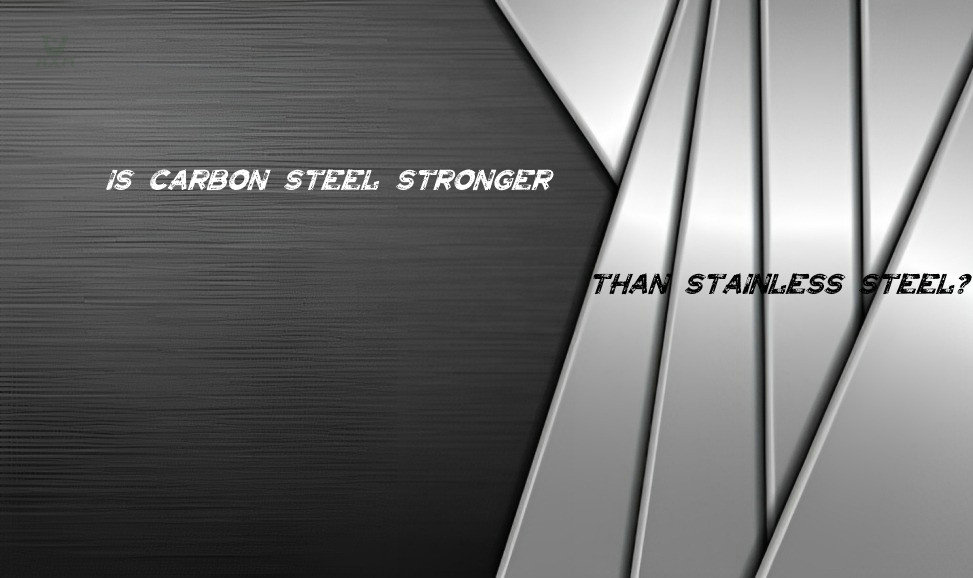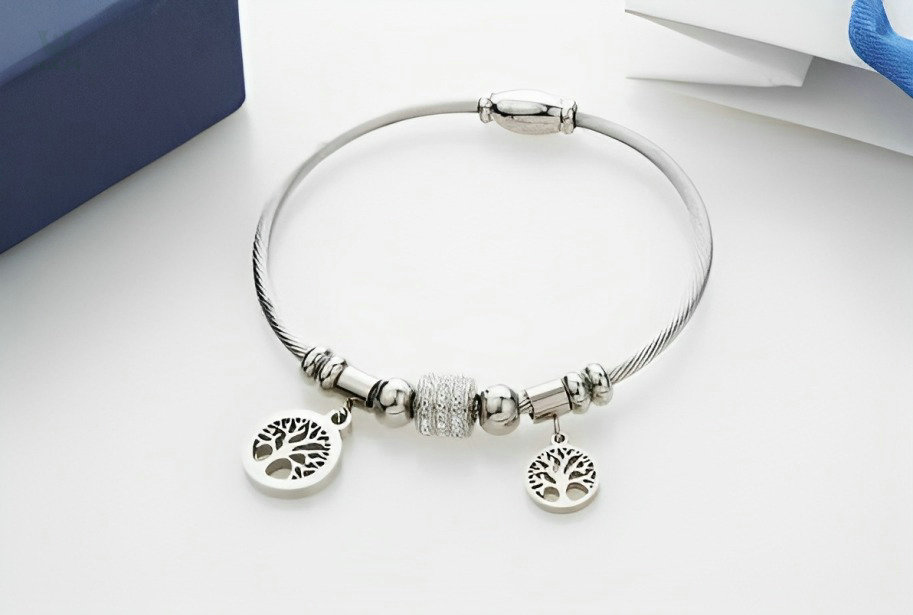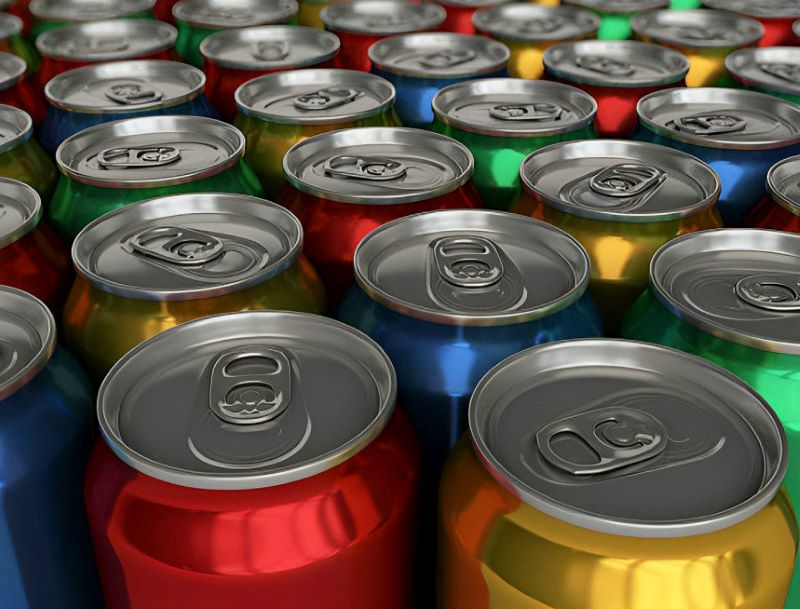When it comes to selecting the right material for a particular application, the choice between carbon steel and stainless steel can be perplexing. Both materials are widely used in various industries, from construction and automotive to kitchenware and medical equipment. While they may appear similar on the surface, their distinct properties and characteristics set them apart. The question often arises is, “Is carbon steel stronger than stainless steel?
Is Carbon Steel Stronger Than Stainless Steel?
In general, carbon steel is considered to be stronger than stainless steel. Carbon steel contains a higher percentage of carbon, which enhances its hardness and strength. It is commonly used in applications that require high strength and durability, such as in construction and industrial machinery.
On the other hand, stainless steel contains chromium and other alloying elements, which impart its unique corrosion resistance and attractive appearance. While stainless steel may not be as strong as carbon steel, it offers excellent resistance to rust and corrosion, making it ideal for applications in environments with high moisture or chemical exposure.
In this blog, we will explore the key factors that determine the strength of carbon steel and stainless steel. We will analyze their composition, microstructure, and mechanical properties to shed light on their respective strengths and limitations. Additionally, we will delve into real-world applications to understand which material proves superior in different scenarios. Whether you are an engineer seeking the ideal material for a structural project or a consumer curious about the performance of everyday products, this article will provide you with valuable insights to make informed decisions.
Carbon Steel
Carbon steel, a versatile and widely used material, forms the backbone of numerous industrial applications and structural projects. With its impressive strength and hardness, carbon steel has earned a reputation for reliability and durability. To comprehend the distinctive characteristics and mechanical prowess of carbon steel, we delve into its composition and explore the pivotal role of carbon content in influencing its properties.
Composition and Carbon Content of Carbon Steel
Carbon steel is primarily composed of iron and carbon, with small amounts of other elements. The carbon content in carbon steel plays a crucial role in determining its mechanical properties. Typically, carbon steel contains less than 2% carbon, but the level of carbon can vary, leading to different grades and classifications.
Low carbon steel, also known as mild steel, is a type of carbon steel with a relatively low carbon content, typically ranging from 0.05% to 0.25%. It is one of the most common forms of carbon steel and is widely used in various industries due to its favorable properties.
Characterized by its malleability and ductility, low carbon steel is easy to work with and can be easily shaped and formed. It offers good weldability, making it suitable for welding and joining processes. Additionally, low carbon steel exhibits excellent machinability, allowing for ease of machining and fabrication.
While low carbon steel may not possess the high strength and hardness of higher carbon steels, it compensates with its versatility and cost-effectiveness. It finds application in a wide range of products, including structural components, automotive parts, pipes, and general-purpose machinery.
The low carbon content results in a material with relatively good toughness and impact resistance. However, it may not be suitable for applications requiring exceptional hardness or wear resistance. As a result, low carbon steel is often chosen for projects where formability, weldability, and economic considerations take precedence.
Due to its advantageous mechanical properties and widespread availability, low carbon steel remains a popular choice in various industries. Alloy suppliers provide low carbon steel a reliable foundation for diverse engineering and manufacturing applications.
Medium carbon steel is a type of carbon steel with a higher carbon content than low carbon steel, typically ranging from 0.30% to 0.60%. This increase in carbon content imparts medium carbon steel with enhanced strength and hardness while maintaining a reasonable level of ductility.
With improved strength, medium carbon steel is well-suited for applications requiring higher load-bearing capabilities. It finds use in manufacturing gears, axles, crankshafts, and machinery parts subjected to significant stress and impact. Its balance between strength and ductility makes it a suitable choice for components that need to withstand mechanical forces without sacrificing flexibility.
Medium carbon steel exhibits good machinability and weldability, although precautions should be taken during welding to prevent the formation of brittle zones. Heat treatment can be applied to medium carbon steel to enhance its properties further, allowing for customization to specific application requirements.
While medium carbon steel offers increased strength compared to low carbon steel, it is essential to consider the trade-offs. The higher carbon content reduces its formability and weldability compared to low carbon steel. Therefore, selecting the appropriate carbon steel grade depends on the specific demands of the application, balancing strength, ductility, and ease of fabrication.
As alloy suppliers, offering medium carbon steel provides a valuable middle ground for customers seeking a material that combines strength and ductility. Its versatility and ability to withstand heavy loads make it a sought-after option in various industries, from automotive and machinery to construction and manufacturing.
High carbon steel is a type of carbon steel with a significant carbon content, typically ranging from 0.60% to 1.00% or even higher. This elevated carbon concentration results in exceptional hardness and strength, making high carbon steel ideal for applications demanding wear resistance, cutting ability, and high-stress performance.
One of the primary advantages of high carbon steel is its hardness, which allows it to retain its shape even under heavy loads. As a result, it is commonly used in manufacturing cutting tools, such as knives, blades, and chisels. The hardness of high carbon steel also lends itself well to high-strength wire products, where it can be drawn into thin and strong wire.
While high carbon steel excels in strength, it is less ductile and more brittle compared to lower carbon steel grades. This characteristic means that high carbon steel may be prone to cracking or breaking under certain conditions. Therefore, it is essential to select the appropriate heat treatment and manufacturing processes to mitigate brittleness and optimize its performance for specific applications.
Due to its hardness and wear resistance, high carbon steel is particularly well-suited for applications in industries such as automotive, construction, and cutting tools manufacturing. However, because of its limited formability and weldability, high carbon steel is typically used in applications where its unique properties are most beneficial, striking a balance between hardness and toughness to deliver exceptional performance in the most demanding environments.
Overall, high carbon steel serves as a robust choice for applications where exceptional hardness, wear resistance, and strength are vital. Alloy suppliers offering high carbon steel provide their customers with a versatile material that excels in demanding environments, offering superior performance and longevity for a wide range of industrial applications.
As alloy suppliers, providing a comprehensive range of both carbon steel and stainless steel grades allows customers to make informed decisions based on their specific needs, ensuring optimal performance and durability for their diverse applications.
High strength and hardness characteristics
Carbon steel exhibits notable strength and hardness due to its higher carbon content compared to other types of steel. The carbon atoms in the steel lattice form strong chemical bonds, creating a rigid and sturdy material.
- Strength: The increased carbon content enhances the tensile strength of carbon steel, allowing it to withstand substantial mechanical loads and stresses without deformation or failure. This makes carbon steel an excellent choice for structural components in construction and heavy machinery, where strength and load-bearing capacity are paramount.
- Hardness: The presence of carbon imparts hardness to carbon steel, making it resistant to wear, abrasion, and deformation. It is well-suited for applications involving cutting, shearing, and stamping processes. For example, carbon steel finds use in the manufacturing of blades, cutting tools, and industrial equipment, where hardness is crucial for maintaining sharp edges and durability.
As alloy suppliers, offering a variety of carbon steel grades allows customers to select the appropriate material based on their specific needs. Higher carbon content generally translates to increased strength and hardness; however, it can also affect other properties such as weldability and ductility. Alloy suppliers play a vital role in providing tailored carbon steel solutions to meet the diverse requirements of various industries, ensuring high-performance materials that deliver superior strength, hardness, and overall reliability.
Stainless Steel
Alloying elements, including chromium, play a crucial role in enhancing the properties of stainless steel, making it a versatile and widely-used material in various industries. Chromium, in particular, is a key alloying element in stainless steel, typically present in concentrations of 10.5% or higher.
Alloying elements of stainless steel
In stainless steel, chromium is one of the primary alloying elements, typically comprising at least 10.5% of the alloy’s composition. The addition of chromium enhances the material’s corrosion resistance, making it highly resistant to rust and staining. When exposed to oxygen in the atmosphere, chromium reacts to form a thin, invisible layer of chromium oxide on the surface of the steel. This passive oxide layer acts as a protective barrier, preventing the underlying metal from reacting with its environment and effectively inhibiting the process of corrosion.
Furthermore, chromium imparts stainless steel with other desirable attributes, including high temperature resistance, strength, and excellent mechanical properties. Depending on the specific application and requirements, different amounts of chromium and other alloying elements can be incorporated into stainless steel to achieve a wide range of grades and performance levels.
Alloying elements, especially chromium in stainless steel, significantly contribute to the material’s versatility, durability, and applicability across diverse industries. As a result, alloy suppliers play a pivotal role in offering precisely engineered stainless steel grades with the right combination of alloying elements, meeting the demands of various applications ranging from architecture and automotive to medical and aerospace sectors.
Alloying elements of stainless steel
Stainless steel possesses unique corrosion resistance properties that set it apart from other metals and alloys. These properties are a result of the presence of specific alloying elements, primarily chromium, which comprises at least 10.5% of the stainless steel’s composition.
The key factors contributing to the exceptional corrosion resistance of stainless steel are:
When exposed to oxygen in the atmosphere, chromium reacts to form a thin, passive chromium oxide layer on the surface of the stainless steel. This layer acts as a protective barrier, preventing the underlying metal from direct contact with corrosive agents, such as water, chemicals, and acids.
In the event of surface damage or abrasion, the chromium oxide layer has the remarkable ability to self-repair. It reforms spontaneously when exposed to oxygen, restoring the protective barrier and maintaining the material’s resistance to corrosion.
Alloy suppliers can enhance stainless steel’s corrosion resistance by a process called passivation. This involves immersing the stainless steel in an oxidizing acid solution, further promoting the formation of the protective chromium oxide layer.
These unique corrosion resistance properties make stainless steel an ideal choice for applications where exposure to moisture, harsh environments, and corrosive substances is a concern. In industries such as marine, chemical processing, food and beverage, and medical, stainless steel’s resistance to rust and staining ensures longevity, hygiene, and structural integrity. As alloy suppliers, providing high-quality stainless steel grades with tailored corrosion resistance properties allows customers to achieve reliable and durable solutions for their specific needs.
Comparing Mechanical Properties
When comparing the mechanical properties between carbon steel and stainless steel, it’s essential to recognize their fundamental differences resulting from their unique compositions.
- Carbon Steel: Carbon steel, with varying carbon content, offers different strength levels. Low carbon steel (mild steel) is less strong but more ductile, while high carbon steel is exceptionally strong and hard. However, high carbon steel may be more brittle than low carbon steel.
- Stainless Steel: Stainless steel generally has lower strength compared to high carbon steel. Its strength can be enhanced through alloying elements like chromium and nickel, but it is still typically not as strong as high carbon steel. Stainless steel’s hardness is sufficient for many applications, particularly when corrosion resistance is essential.
- Carbon Steel: Carbon steel is susceptible to rust and corrosion due to its lack of chromium, making it less suitable for applications in corrosive environments.
- Stainless Steel: Stainless steel’s unique corrosion resistance is a standout feature due to its high chromium content. The formation of a passive chromium oxide layer protects stainless steel from rust and corrosion, making it an excellent choice for applications exposed to moisture and chemicals.
- Carbon Steel: Low and medium carbon steels are more ductile and have better toughness than high carbon steel. This property is advantageous in applications requiring formability and impact resistance.
- Stainless Steel: While stainless steel is generally less ductile than low carbon steel, it maintains good toughness, allowing it to withstand some degree of deformation and impact.
- Carbon Steel: Carbon steel is relatively easy to weld, particularly low and medium carbon steels, making it a preferred choice in many welding applications.
- Stainless Steel: Welding stainless steel can be more challenging due to its higher alloy content and potential sensitization issues. However, with the right welding techniques and proper selection of stainless steel grades, successful welds can be achieved.
Ultimately, the choice between carbon steel and stainless steel depends on the specific requirements of the application. Carbon steel is often favored for its affordability, formability, and weldability, while stainless steel is valued for its corrosion resistance and aesthetic appeal in environments where rust and staining are concerns. Alloy suppliers offer a range of carbon and stainless steel grades, allowing customers to select the optimal material for their diverse engineering and manufacturing needs.
Factors Influencing Material Choice
The decision-making process for material choice involves careful consideration of environmental factors, cost implications, and the desired structural properties.
The choice of materials, especially for critical applications, is heavily influenced by the surrounding environment and potential exposure risks. For instance, in corrosive or high-temperature environments, stainless steel, with its excellent corrosion resistance properties, may be preferred. In contrast, carbon steel might be suitable for less demanding environments. Alloy suppliers play a pivotal role in providing materials tailored to specific environmental conditions, ensuring optimal performance and longevity.
Cost is a significant factor in material selection, especially for large-scale projects or mass production. Carbon steel is generally more economical than stainless steel, making it a practical choice for applications where corrosion resistance is not a primary concern. Alloy suppliers offer a range of carbon and stainless steel grades, allowing customers to strike a balance between performance and budget.
In structural design, the weight and density of the chosen material can significantly impact overall construction and transportation costs. High-strength materials, like high carbon steel or specific stainless steel grades, can enable lighter and more efficient structures. Alloy suppliers provide options with different densities, allowing engineers to optimize designs based on load-bearing requirements and cost considerations.
Alloy suppliers play a crucial role in offering a diverse range of materials, including carbon steel and stainless steel grades, to meet specific project needs. By understanding the unique characteristics of each material and evaluating the project’s requirements, engineers and designers can make informed decisions that result in successful, cost-effective, and reliable solutions.
conclusion
Throughout the analysis, it is evident that both carbon steel and stainless steel exhibit distinct mechanical properties that make them suitable for various applications. Carbon steel, especially high carbon steel, boasts exceptional strength and hardness, making it ideal for load-bearing and cutting applications. On the other hand, stainless steel’s unique corrosion resistance properties, attributed to its chromium content, offer reliability in environments prone to rust and corrosion. Understanding the strengths and weaknesses of each material empowers engineers to make informed choices for specific projects.
The importance of matching material properties to application requirements cannot be overstated. Whether it’s considering the environmental conditions, budget constraints, or structural design implications, alloy suppliers play a vital role in providing a diverse array of carbon and stainless steel grades. By selecting the most appropriate material, engineers can ensure optimal performance, durability, and safety in their designs, contributing to the success of projects across various industries.
In conclusion, the process of material selection involves careful evaluation of multiple factors, including strength, corrosion resistance, cost, and weight implications. Alloy suppliers play a crucial role in offering tailored solutions to meet specific application needs. Encouraging informed decisions in material selection enables engineers and designers to create reliable and efficient structures, equipment, and products that stand the test of time, delivering value and longevity to customers and end-users alike.
Ultimately, the collaboration between engineers and alloy suppliers is key to unlocking the full potential of carbon steel and stainless steel in diverse applications, ensuring that the right material is chosen to meet the specific demands of each project.







